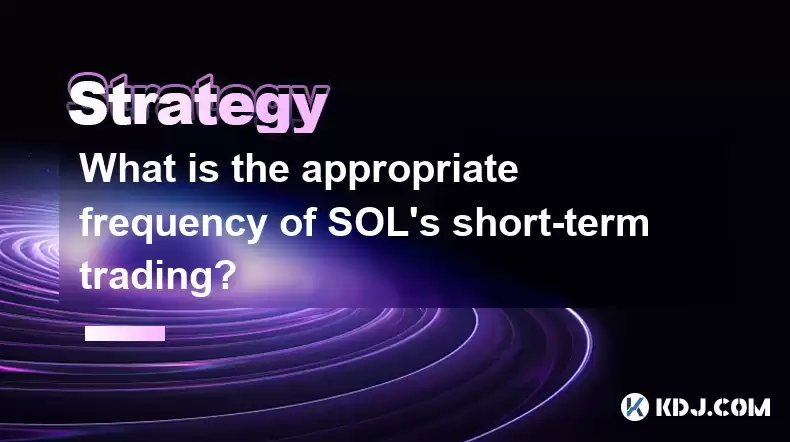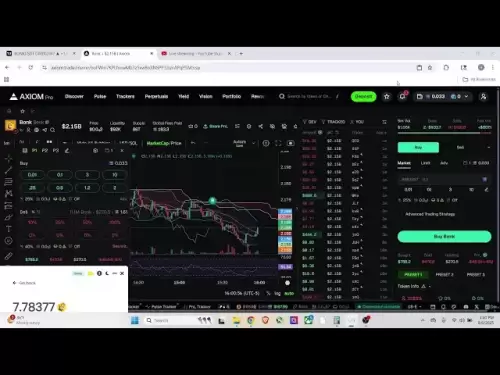-
 Bitcoin
Bitcoin $115100
1.27% -
 Ethereum
Ethereum $3675
2.71% -
 XRP
XRP $2.995
1.45% -
 Tether USDt
Tether USDt $1.000
0.02% -
 BNB
BNB $769.8
2.64% -
 Solana
Solana $168.0
3.25% -
 USDC
USDC $0.9999
-0.01% -
 TRON
TRON $0.3371
1.48% -
 Dogecoin
Dogecoin $0.2051
3.36% -
 Cardano
Cardano $0.7394
2.30% -
 Hyperliquid
Hyperliquid $38.15
0.42% -
 Stellar
Stellar $0.3966
-0.36% -
 Sui
Sui $3.486
2.93% -
 Chainlink
Chainlink $16.72
2.52% -
 Bitcoin Cash
Bitcoin Cash $568.0
4.36% -
 Hedera
Hedera $0.2440
2.59% -
 Ethena USDe
Ethena USDe $1.001
0.04% -
 Avalanche
Avalanche $22.16
2.06% -
 Litecoin
Litecoin $119.1
-0.73% -
 UNUS SED LEO
UNUS SED LEO $8.991
0.04% -
 Toncoin
Toncoin $3.232
-0.39% -
 Shiba Inu
Shiba Inu $0.00001233
2.82% -
 Uniswap
Uniswap $9.717
2.53% -
 Polkadot
Polkadot $3.664
1.85% -
 Dai
Dai $1.000
0.01% -
 Monero
Monero $281.2
-3.89% -
 Bitget Token
Bitget Token $4.350
1.55% -
 Cronos
Cronos $0.1428
5.07% -
 Pepe
Pepe $0.00001050
3.68% -
 Aave
Aave $262.3
3.54%
What is the appropriate frequency of SOL's short-term trading?
The appropriate frequency for short-term trading of SOL depends on market volatility, personal goals, and risk tolerance; use technical analysis and stay informed to optimize trades.
Apr 20, 2025 at 04:08 pm

What is the appropriate frequency of SOL's short-term trading?
Short-term trading of Solana (SOL) can be a lucrative venture for those who understand the market dynamics and have a solid strategy in place. The appropriate frequency of trading SOL in the short term depends on various factors such as market volatility, personal trading goals, and the trader's risk tolerance. This article will delve into the nuances of determining the right frequency for short-term trading of SOL, providing insights and practical tips to help traders make informed decisions.
h3Understanding Market Volatility and SOL
Market volatility plays a crucial role in determining the appropriate frequency of short-term trading. Solana, like other cryptocurrencies, is known for its high volatility, which can lead to significant price swings within short periods. This volatility can be both a boon and a bane for short-term traders. On one hand, it offers the potential for high returns; on the other, it increases the risk of substantial losses.
To navigate this volatility effectively, traders need to keep a close eye on market trends and news that could impact SOL's price. For instance, announcements related to Solana's ecosystem, such as new partnerships or technological upgrades, can cause rapid price movements. Additionally, broader market sentiment and macroeconomic factors can influence SOL's price, making it essential for traders to stay informed and agile in their trading approach.
h3Setting Personal Trading Goals
Before deciding on the frequency of short-term trading SOL, it's vital to establish clear personal trading goals. Are you looking to make quick profits from small price movements, or are you aiming to capitalize on larger swings over a few days? Your goals will significantly influence how often you should trade.
For those seeking to profit from minute-to-minute or hour-to-hour price changes, a higher frequency of trades might be appropriate. This approach requires constant monitoring of the market and quick decision-making. Conversely, if your goal is to take advantage of daily or weekly trends, you might opt for a lower frequency, trading less often but holding positions for longer periods.
h3Assessing Risk Tolerance
Risk tolerance is another critical factor in determining the frequency of short-term trading. Short-term trading inherently carries more risk due to the potential for rapid price changes. Traders with a higher risk tolerance may engage in more frequent trading, aiming to capitalize on every small opportunity. However, those with a lower risk tolerance might prefer to trade less often, focusing on more significant and less frequent price movements.
To assess your risk tolerance, consider how much capital you are willing to risk on each trade and how you would react to a sudden drop in SOL's price. Understanding your risk tolerance will help you set appropriate stop-loss levels and determine the frequency of your trades.
h3Technical Analysis and Trading Frequency
Technical analysis is a vital tool for short-term traders, helping them identify entry and exit points based on historical price data and market indicators. For those trading SOL frequently, technical analysis can be used to spot short-term trends and patterns that may not be visible over longer timeframes.
Common technical indicators used in short-term trading include moving averages, Relative Strength Index (RSI), and Bollinger Bands. These indicators can help traders determine when to enter or exit a trade based on overbought or oversold conditions, trend strength, and volatility.
For example, if the RSI indicates that SOL is overbought, it might be a signal to sell or reduce your position. Conversely, if the RSI suggests SOL is oversold, it could be an opportunity to buy. By using technical analysis, traders can fine-tune their trading frequency to align with market conditions.
h3Practical Tips for Short-Term Trading SOL
Here are some practical tips to help you determine the appropriate frequency of short-term trading SOL:
Use a Trading Journal: Keeping a detailed trading journal can help you track your trades and analyze your performance over time. This can provide valuable insights into which trading frequencies work best for you.
Set Clear Entry and Exit Rules: Establish clear rules for entering and exiting trades based on your technical analysis and trading goals. This can help you avoid emotional decision-making and maintain discipline in your trading frequency.
Monitor Market Liquidity: Ensure that there is sufficient liquidity in the SOL market to execute your trades at the desired frequency. Low liquidity can lead to slippage, which can impact your trading performance.
Utilize Trading Bots: For those looking to trade very frequently, trading bots can be a useful tool. These bots can execute trades based on predefined criteria, allowing you to capitalize on opportunities even when you're not actively monitoring the market.
Stay Informed: Keep up-to-date with the latest news and developments in the Solana ecosystem. This can help you anticipate price movements and adjust your trading frequency accordingly.
h3Balancing Frequency and Performance
Finding the right balance between trading frequency and performance is key to successful short-term trading of SOL. Trading too frequently can lead to overtrading, where transaction costs and emotional stress can erode your profits. On the other hand, trading too infrequently might cause you to miss out on profitable opportunities.
To strike the right balance, consider starting with a moderate trading frequency and gradually adjusting based on your performance and market conditions. Analyze your trading journal to identify patterns and refine your strategy. Remember, the goal is to maximize returns while managing risk effectively.
h3Frequently Asked Questions**
Q1: Can I use automated trading strategies for SOL short-term trading?
Yes, automated trading strategies, such as trading bots, can be used for short-term trading of SOL. These bots can execute trades based on predefined criteria, allowing you to trade more frequently and potentially capitalize on more opportunities. However, it's essential to thoroughly test and monitor these bots to ensure they align with your trading goals and risk tolerance.
Q2: How does the time of day affect SOL's short-term trading frequency?
The time of day can significantly impact SOL's short-term trading due to varying levels of market activity. Typically, trading volumes and volatility are higher during the overlap of major market sessions, such as when the U.S. and Asian markets are both open. Traders might find more opportunities to trade frequently during these times, but they should also be prepared for increased volatility and potential slippage.
Q3: What role does market sentiment play in determining SOL's short-term trading frequency?
Market sentiment can greatly influence SOL's price movements and, consequently, the appropriate frequency of short-term trading. Positive sentiment, driven by favorable news or developments, can lead to rapid price increases, prompting more frequent trading to capitalize on these movements. Conversely, negative sentiment might result in price drops, where traders might choose to trade less frequently or hold positions longer to wait for a recovery.
Q4: How can I manage the psychological stress associated with frequent short-term trading of SOL?
Managing psychological stress is crucial for short-term traders. Strategies to cope with stress include setting realistic expectations, taking regular breaks from trading, and practicing mindfulness or other stress-relief techniques. Additionally, maintaining a disciplined approach to trading and adhering to your trading plan can help reduce emotional decision-making and associated stress.
Disclaimer:info@kdj.com
The information provided is not trading advice. kdj.com does not assume any responsibility for any investments made based on the information provided in this article. Cryptocurrencies are highly volatile and it is highly recommended that you invest with caution after thorough research!
If you believe that the content used on this website infringes your copyright, please contact us immediately (info@kdj.com) and we will delete it promptly.
- BlockDAG, Litecoin, and Cardano: Charting the Course in Crypto's Dynamic Waters
- 2025-08-07 09:09:06
- Fireverse Token: Igniting a Musical Revolution in Web3
- 2025-08-07 08:27:45
- Ethereum, L2 Withdrawals, and Decentralization: A New Yorker's Take
- 2025-08-07 08:32:33
- Avalanche vs. Ruvi AI: Daily Sales Tell a Story of Crypto Disruption
- 2025-08-07 06:29:35
- DeSoc: The Crypto to Buy Now for a Decentralized Future (and Maybe 43x Gains!)
- 2025-08-07 06:50:16
- Arctic Pablo Coin: Riding the Meme Coin Wave with a Deflationary Twist
- 2025-08-07 07:18:13
Related knowledge

How to avoid common crypto investment mistakes?
Jul 13,2025 at 01:35am
Understanding the Risks of Crypto InvestmentInvesting in cryptocurrency can be highly rewarding, but it also comes with significant risks. One of the ...

What is a long-short crypto strategy?
Jul 15,2025 at 10:56am
Understanding the Basics of a Long-Short Crypto StrategyA long-short crypto strategy is an investment approach where traders simultaneously take long ...

What is a long-short crypto strategy?
Jul 11,2025 at 01:28pm
Understanding the Basics of Long-Short Crypto StrategyA long-short crypto strategy is an investment approach where traders take both long and short po...

How to use the RSI indicator for crypto?
Jul 12,2025 at 03:56pm
Understanding the RSI Indicator in Cryptocurrency TradingThe Relative Strength Index (RSI) is a momentum oscillator used to measure the speed and chan...

Is copy trading a good strategy for crypto beginners?
Jul 12,2025 at 08:28am
Understanding Copy Trading in the Cryptocurrency MarketCopy trading is a strategy where novice traders replicate the trades of experienced investors a...

How to build a crypto portfolio with $1000?
Jul 13,2025 at 08:14pm
Understanding the Basics of Cryptocurrency InvestmentBuilding a crypto portfolio with $1000 starts with understanding the fundamentals of cryptocurren...

How to avoid common crypto investment mistakes?
Jul 13,2025 at 01:35am
Understanding the Risks of Crypto InvestmentInvesting in cryptocurrency can be highly rewarding, but it also comes with significant risks. One of the ...

What is a long-short crypto strategy?
Jul 15,2025 at 10:56am
Understanding the Basics of a Long-Short Crypto StrategyA long-short crypto strategy is an investment approach where traders simultaneously take long ...

What is a long-short crypto strategy?
Jul 11,2025 at 01:28pm
Understanding the Basics of Long-Short Crypto StrategyA long-short crypto strategy is an investment approach where traders take both long and short po...

How to use the RSI indicator for crypto?
Jul 12,2025 at 03:56pm
Understanding the RSI Indicator in Cryptocurrency TradingThe Relative Strength Index (RSI) is a momentum oscillator used to measure the speed and chan...

Is copy trading a good strategy for crypto beginners?
Jul 12,2025 at 08:28am
Understanding Copy Trading in the Cryptocurrency MarketCopy trading is a strategy where novice traders replicate the trades of experienced investors a...

How to build a crypto portfolio with $1000?
Jul 13,2025 at 08:14pm
Understanding the Basics of Cryptocurrency InvestmentBuilding a crypto portfolio with $1000 starts with understanding the fundamentals of cryptocurren...
See all articles

























































































